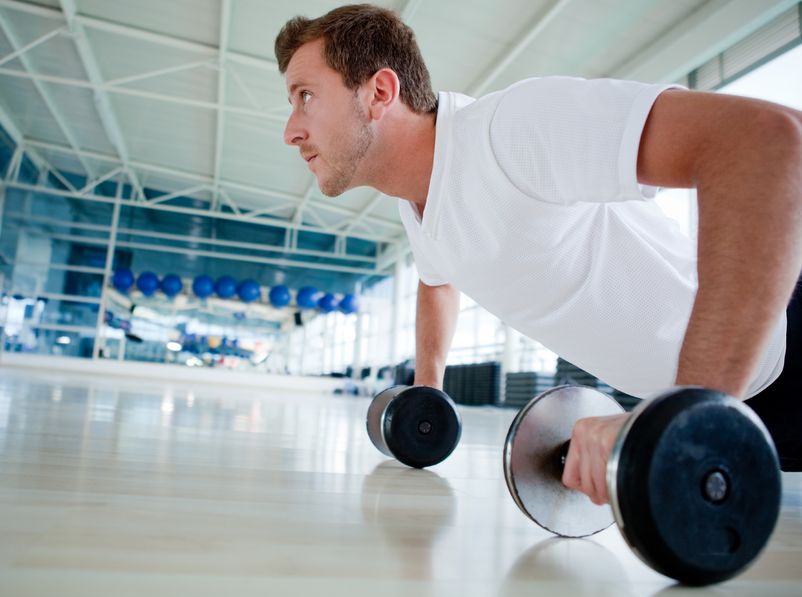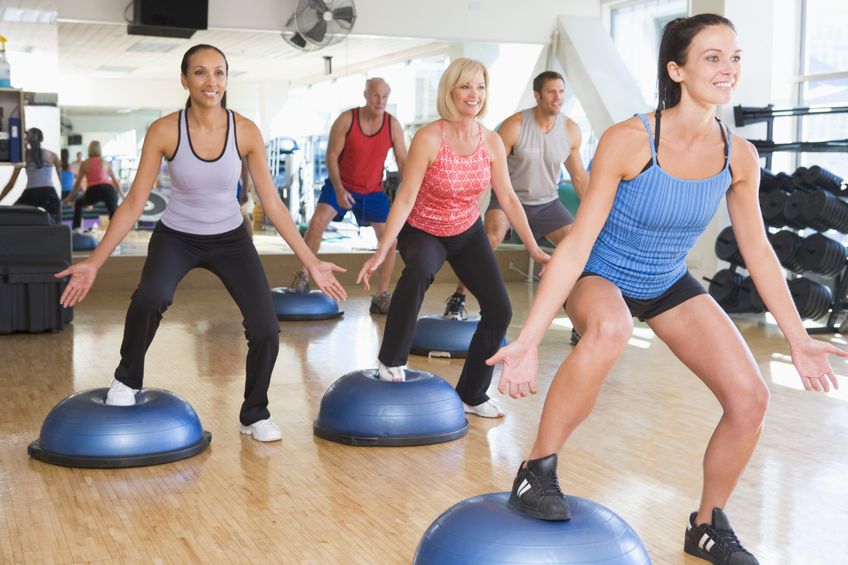Exercise Myths
10 Exercise Myths That May Hinder Workouts
by ACE Physical Therapy and Sports Medicine Institute
Tips for Exercise.
- Exercise frequency and intensity will determine how quickly your fitness level will improve.
- A simple way to calculate the maximum heart rate (for the lay person) is the formula: 220 – your age.
- Use the RICE (Rest, Ice, Compression, Elevation) principles of acute injury treatment if you injure yourself while exercising.
- DOMS pain is usually worse 48 hours after the exercise routine.
- Seek the advice of a Physical Therapist if you have questions about your work out.
Regular exercise plays a vital role in overall wellness and has been linked to lower body weight, lower incidence of cardiovascular disease, more energy, and generally a better quality of life. The growing popularity of fitness has also given rise a growing number of misnomers about the best types of exercise, the best way to measure success, and the best ways to prepare. These exercise myths cause confusion and could actually inhibit real fitness. In fact, some people may discontinue or never begin a regular routine do to these exercise myths.
Myths
1. Low intensity exercise burns more fat.
If weight control if the key goal in exercise, then it is essential to “burn” as many calories as possible during a workout. Working out at a low intensity might enable you to work out for a longer time period, but probably will not “burn” the most calories. Work outs that increase your heart rate to a perceived level of intensity that is moderate to intense will enable you to burn the greatest amount of calories.
2. Heart rate monitors are the best way to determine how hard you are working out.
Actually, heart monitors don’t always give the most accurate picture because your workout intensity is not always directly linked to your heart rate. A practical way to determine workout intensity is to perform the “talk” test. If you can talk in full, complete sentences, your intensity is mild. If you have to speak in short bursts, you can label your intensity as moderate to above moderate and if you can barely speak you are performing very high intensity exercise.
3. Using a scale to weigh yourself is a positive motivator.
Many people use a scale on a daily basis and become obsessed with the results, but the scale may discourage and distract you from the real goal of fitness. The actual number on the scale does not reflect your body type. Many people exercise regularly and don’t experience a reduction in body fat. Excessively hard workouts develop more muscle mass, causing an increase in body weight because muscle weighs more than fat. You should be more concerned with their percentage of body fat and not the number on the scale.
4. Spot exercises enable you to develop a “six pack” in your abs.
No one exercise can give you the “six pack” appearance in your abdominal muscles. You should perform a well-designed core exercise routine and include cardiovascular exercises. The only way to have the “six pack” appearance is to reduce the body fat that is on top of the muscle tissue.
5. There is no such thing as too much exercise.
This is not a problem in most people, but there are a select few that actually exercise too much and too intensely. Overtraining can cause a person to experience a general malaise, loss of motivation, a decrease in the immune system, difficulty sleeping, and an increase in musculoskeletal.
6. Stretching can prevent injuries.
As it turns out, stretching before exercise does not prevent injuries and and in some instances can lead to an decrease in the amount of power someone can generate during the activity. This can make people more susceptible to an injury and reduce performance ability. Static or no movement stretching has been shown to be almost useless during a pre-activity/routine time period. Dynamic stretching or movement stretches are more beneficial prior to exercise because they help to increase blood flow and tissue temperature within the body part(s) that will be used during the activity/routine.
7. Strength training in runners is not a good idea.
Running can be catabolic and actually “break down” tissue. No one should participate in the same activity/routine all of the time. Cross training is much better for the musculoskeletal system. Resistance training is a great idea for runners. The idea is not to lift a heavy or excessive amount of weight, but resistance training places a different type of stress and strain across the joint and soft tissues of the body. The body has to adapt to these forces, increasing strength and improving running capability.
8. Lactic acid causes your muscles to hurt the day after a hard workout.
This myth has been debunked many times over in the past 25 years. Lactic acid is responsible for the “burning” sensation that occurs in the muscle as you exercise. Lactic acid is a metabolic bi-product of muscle contractions, but most of it will be “cleared” out of the muscle tissue within 1 minute of stopping the exercise. Muscle soreness that occurs within 24 to 48 hours is due to muscle cell damage that takes place during strenuous exercise. The cell swells and the coverings of the cell distend and stretch. The excess fluid in the cell and the distention of the cell lead to pain. This condition is referred to as Delayed Onset Muscle Soreness (DOMS). The best treatment is to perform the exact same routine that lead to the muscle cell damage, but you have to use less resistance and repetitions.
9. You have to work-out for an extended period of time to get in shape.
You don’t have to spend hours in the gym to “get in shape.” There are studies that indicate that as little as 20 minutes per day, several times per week can be all that you need to increase your cardiovascular and musculoskeletal system conditioning. The key to these routines is the intensity. The less time spent in the gym equals a need to increase the intensity of the workout.
10. Young children should not lift weights.
Children can benefit from a structured resistance/weight training program. The focus on should be to teach children the proper form of the different exercises. They will not experience an increase in muscle size or significant strength until they reach puberty. The level of testosterone is not adequate to facilitate the muscle development until a certain age.
Regular exercise can improve our lives. Sadly, exercise myths can cause people to stay away from certain activities. If you have a question about certain routines or activities ask a qualified healthcare professional for advice. There are many certifications for personal trainers and they are not all the same. The National Strength and Conditioning Association has a certification that requires an undergraduate degree in an associated healthcare field. Most Physical Therapist can provide guidance to a proper exercise routine and be able to answer any questions.
Read more articles on our main website blog at: ACE-pt.org/blog
Vist our main website at www.ACE-pt.org


